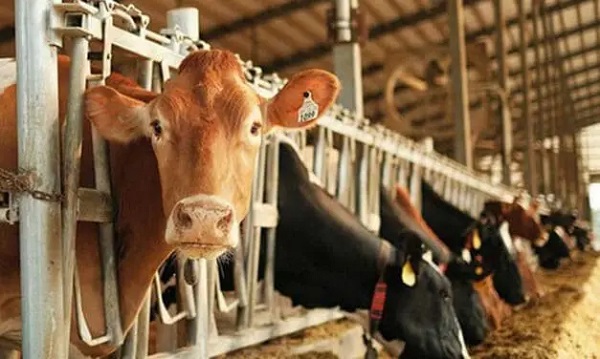COVID-19
Questions linger after Coutts verdict

Chris Carbert and Anthony Olienick Courtesy Bridge City News/YouTube
From the Frontier Centre for Public Policy
By Ray McGinnis
The Coutts trial may be over, but the questions it raises about justice and overreach continue.
A jury in the trial of Chris Carbert and Anthony “Tony” Olienick rendered a NOT GUILTY verdict on a charge of conspiracy to commit murder of police officers. Known as the Coutts Two, Carbert and Olienick’s trial lasted from June 6 to August 2, 2024. After two and a half days of deliberations, the jury also found the pair GUILTY of possession of weapons for a dangerous purpose, and mischief over $5,000. Olienick was also found GUILTY of possession of explosives for a dangerous purpose.
On February 13, 2022, Olienick was arrested outside Smuggler’s Saloon. Early on February 14, 2022, Chris Carbert was awakened from his sleep in a trailer by police loudspeaker.
Two Co-Accused Had All Charges Dropped in February
Conspiracy, possession of weapons, and mischief charges were also laid against Chris Lysak and Jerry Morin. Carbert, Olienick, Lysak and Morin, were dubbed the Coutts Four.
Lysak was arrested in Coutts late on February 13, 2022. Morin was arrested heading west of Calgary on Hwy. 22. He would work for a rancher near Priddis, a three-hour drive from Coutts. Lysak and Morin had all the original charges in the indictment dropped on Feb 6th, 2024.
Lysak pleaded to improper storage of a firearm. That charge typically results in a minor fine, not two years behind bars. Morin pled guilty to conspiracy to traffic firearms, not to trafficking firearms. Two years in custody — including solitary confinement and being witness to brutality between prisoners — had taken its toll.
Tony Olienick’s lawyer, Marilyn Burns, told this reporter, Morin was not guilty of the new charge to which he plead. But this was the plea deal the Crown would agree to. Morin and Lysak were released after 723 days behind bars.
Carbert and Olienick maintained their innocence. However, pre-trial deliberations in court dribbled out for over a year before the trial itself.
The Accused Were Unarmed
None of the original Coutts Four — Carbert, Olienick, Lysak or Morin — were armed when arrested. None had a criminal record. Three of the four are fathers with children. Before his arrest, Lethbridge resident Chris Carbert was a self-employed fisherman who also ran a landscaping and fencing business with nine employees.
Years before his arrest, Tony Olienick took part of the clean-up in High River, Alberta, after the 2013 floods. The self-employed gravel truck owner got contract work at a stone quarry.
Coutts Charges Cited to Invoke Emergencies Act
At the Public Order Emergency Commission inquiry in November 2022, several senior cabinet and government officials cited events in Coutts as one of the triggers for invoking the Emergencies [War Measures] Act on February 14, 2022. Deputy Prime Minister Chrystia Freeland testified “we heard from the RCMP Commissioner about concerns that there were serious weapons in Coutts . . . that really raised the stakes in terms of my degree of concern about what could be happening.”
Prime Minister Justin Trudeau stated, “the occupation at Coutts seemed to be emboldened.”
Coutts Mayor, Jimmy Willett described the protesters as “Domestic Terrorists.” Public Safety Minister Marco Mendicino testified “the situation was combustible… individuals… involved in Coutts were prepared to go down with a fight that could lead to the loss of life, . . . would have triggered other events across the country.”
The Clerk of the Privy Council, Janice Charette, pointed to the “seriousness” and “scale” of the “illegal activity,” “the quantity of weapons and ammunition discovered by the RCMP… contemplated by people at Coutts.” This confirmed her view that these people were insurrectionists, bent on “overthrowing the government.”
Yet, no bodycam footage and no recording entered as evidence in the trial substantiated claims by RCMP that Carbert or Olienick plotted violence against police. In January 2024, a federal court ruled the invocation of the Emergencies Act was “unconstitutional.” The August 2 not guilty verdict for conspiracy to commit murder adds to the perception of government overreaction to the protests.
A Surprise from the Crown
In its closing words to the jury, the Crown suddenly alleged there was a hand-off of weapons on February 11, 2022.
The Crown should provide full disclosure to the defence before the trial concludes so allegations can be tested in court. Never mind. This last-minute allegation may have swayed the jury to find the defendants guilty of the possession of firearms charge and Olienick of possession of an explosive device for a dangerous purpose.
Sentencing and bail hearings were scheduled from August 26 to 30. The week of September 9, the judge at the Coutts Two trial will hand down sentences for both of the accused given their combination of i) not guilty of conspiracy to commit murder verdict by the jury and ii) guilty verdicts for possession of a weapon for a dangerous purpose and mischief, and for Olienick a separate guilty verdict for possession of an explosive for a dangerous purpose.
By then, the pair will have been in custody for 935 days.
This commentary is first of a three part series. Read part two here, and three here.
Ray McGinnis is a Senior Fellow with the Frontier Centre for Public Policy. His forthcoming book is Unjustified: The Emergencies Act and the Inquiry that Got It Wrong
COVID-19
Judge denies Canadian gov’t request to take away Freedom Convoy leader’s truck

From LifeSiteNews
A judge ruled that the Ontario Court of Justice is already ‘satisfied’ with Chris Barber’s sentence and taking away his very livelihood would be ‘disproportionate.’
A Canadian judge has dismissed a demand from Canadian government lawyers to seize Freedom Convoy leader Chris Barber’s “Big Red” semi-truck.
On Friday, Ontario Court of Justice Judge Heather Perkins-McVey denied the Crown’s application seeking to forfeit Barber’s truck.
She ruled that the court is already “satisfied” with Barber’s sentence and taking away his very livelihood would be “disproportionate.”
“This truck is my livelihood,” said Barber in a press release sent to LifeSiteNews.
“Trying to permanently seize it for peacefully protesting was wrong, and I’m relieved the court refused to allow that to happen,” he added.
Criminal defense lawyer Marwa Racha Younes was welcoming of the ruling as well, stating, “We find it was the right decision in the circumstances and are happy with the outcome.”
John Carpay, president of the Justice Centre for Constitutional Freedoms (JCCF), said the decision is “good news for all Canadians who cherish their Charter freedom to assemble peacefully.”
READ: Freedom Convoy protester appeals after judge dismissed challenge to frozen bank accounts
“Asset forfeiture is an extraordinary power, and it must not be used to punish Canadians for participating in peaceful protest,” he added in the press release.
As reported recently by LifeSiteNews, the Canadian government claimed that Barber’s truck is an “offence-related property” relating to his involvement in the 2022 protests against Canada’s COVID mandates.
At this time, the court ruling ends any forfeiture proceedings for the time being, however Barber will continue to try and appeal his criminal conviction and house arrest sentence.
Barber’s truck, a 2004 Kenworth long-haul he uses for business, was a focal point in the 2022 protests. He drove it to Ottawa, where it was parked for an extended period of time, but he complied when officials asked him to move it.
On October 7, 2025, after a long trial, Ontario Court Justice Perkins-McVey sentenced Barber and Tamara Lich, the other Freedom Convoy leader, to 18 months’ house arrest. They had been declared guilty of mischief for their roles as leaders of the 2022 protest against COVID mandates, and as social media influencers.
Lich and Barber have filed appeals of their own against their house arrest sentences, arguing that the trial judge did not correctly apply the law on their mischief charges.
Government lawyers for the Crown have filed an appeal of the acquittals of Lich and Barber on intimidation charges.
The pair’s convictions came after a nearly two-year trial despite the nonviolent nature of the popular movement.
COVID-19
Freedom Convoy protester appeals after judge dismissed challenge to frozen bank accounts

From LifeSiteNews
Protestor Evan Blackman’s legal team argues Trudeau’s Emergencies Act-based bank account freezes were punitive state action tied directly to protest participation.
A Freedom Convoy protester whose bank accounts were frozen by the Canadian government says a judge erred after his ruling did not consider the fact that the funds were frozen under the Emergencies Act, as grounds for a stay of proceedings.
In a press release sent out earlier this week, the Justice Centre for Constitutional Freedoms (JCCF) said that Freedom Convoy protestor Evan Blackman will challenge a court ruling in his criminal case via an appeal with the Ontario Superior Court of Justice.
“This case raises serious questions about how peaceful protest is treated in Canada and about the lasting consequences of the federal government’s unlawful use of the Emergencies Act,” noted constitutional lawyer Chris Fleury. “The freezing of protestors’ bank accounts was part of a coordinated effort to suppress dissent, and courts ought to be willing to scrutinize that conduct.”
Blackman was arrested on February 18, 2022, during the police crackdown on Freedom Convoy protests against COVID restrictions, which was authorized by the Emergencies Act (EA). The EA was put in place by former Prime Minister Justin Trudeau’s Liberal government, which claimed the protests were violent, despite no evidence that this was the case.
Blackman’s three bank accounts with TD Bank were frozen due to his participation in the Freedom Convoy, following a directive ordered by Trudeau.
As reported by LifeSiteNews, in November of this year, Blackman was convicted at his retrial even though he had been acquitted at his original trial. In 2023, Blackman’s “mischief” and “obstructing police” charges were dismissed by a judge due to lack of evidence and the “poor memory of a cop regarding key details of the alleged criminal offences.”
His retrial resulted in Blackman getting a conditional discharge along with 12 months’ probation and 122 hours of community service, along with a $200 victim fine surcharge.
After this, Blackman’s application for a stay of proceedings was dismissed by the court. He had hoped to have his stay of proceedings, under section 24(1) of the Charter of Rights and Freedoms, allowed. However, the judge ruled that the freezing of his bank accounts was legally not related to his arrest, and because of this, the stay of proceedings lacked standing.
The JCCF disagreed with this ruling, noting, it “stands in contrast to a Federal Court decision finding that the government’s invocation of the Emergencies Act was unreasonable and violated Canadians’ Charter rights, including those targeted by the financial measures used against Freedom Convoy protestors.”
As of press time, a hearing date has not been scheduled.
In 2024, Federal Court Justice Richard Mosley ruled that Trudeau was “not justified” in invoking the Emergencies Act.
In early 2022, the Freedom Convoy saw thousands of Canadians from coast to coast come to Ottawa to demand an end to COVID mandates in all forms. Despite the peaceful nature of the protest, Trudeau’s federal government enacted the EA in mid-February.
After the protesters were cleared out, which was achieved through the freezing of bank accounts of those involved without a court order as well as the physical removal and arrest of demonstrators, Trudeau revoked the EA on February 23, 2022.
-

 Crime2 days ago
Crime2 days agoBrown University shooter dead of apparent self-inflicted gunshot wound
-

 Business2 days ago
Business2 days agoTrump signs order reclassifying marijuana as Schedule III drug
-

 Health1 day ago
Health1 day agoRFK Jr reversing Biden-era policies on gender transition care for minors
-

 Agriculture2 days ago
Agriculture2 days agoWhy is Canada paying for dairy ‘losses’ during a boom?
-

 Business12 hours ago
Business12 hours agoGeopolitics no longer drives oil prices the way it used to
-

 Alberta2 days ago
Alberta2 days agoHousing in Calgary and Edmonton remains expensive but more affordable than other cities
-

 Censorship Industrial Complex1 day ago
Censorship Industrial Complex1 day agoTop constitutional lawyer warns against Liberal bills that could turn Canada into ‘police state’
-

 Alberta1 day ago
Alberta1 day agoAlberta’s new diagnostic policy appears to meet standard for Canada Health Act compliance









